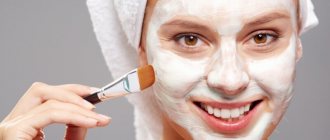Cyanosis is a bluish discoloration of the skin, mucous membranes and lips. This symptom does not occur independently, but indicates general or local hypoxemia, which accompanies many pathological processes. Most often observed in cardiovascular disorders and lung diseases. A doctor can answer the question of why an adult’s lips turn blue after an in-person examination, a survey, and a comprehensive diagnosis. May occur with spasms of blood vessels caused by hypothermia. This reaction of the body is transient in nature. The skin acquires a normal shade after a person warms up. An alarming sign is when a change in skin color is accompanied by increased heart rate, disturbances of consciousness, and blue discoloration of the nail plates.
Types of cyanosis
Cyanosis is classified into true, central, peripheral and false. The most common are the central and peripheral types, which are difficult to distinguish. Cardiogenic shock and pulmonary edema can be accompanied by two types of cyanosis. In the central form of the disease, hemoglobin derivatives are observed in the blood, and arterial blood is not completely saturated with oxygen.
This type is distinguished by its diffuse nature and maximum degree of severity. Accompanied by weak arterialization of blood and hypoxia. Carbon dioxide fills the arterial blood, which provokes blueness of not only the lips, but also the tongue and the inner surface of the cheeks. The transport function of the blood is disrupted and hypoxia develops. The most common reasons include:
- congenital heart defects that lead to pathological discharge of blood into the area of the arterial rus
- circulatory disorders and respiratory diseases, due to which blood oxygen saturation deteriorates
- slow blood flow in the capillaries: the blood loses oxygen, resulting in impaired hemoglobin concentration
- intoxication, which results in the formation of cyanhemoglobin, methemoglobin, sulfhemoglobin
With peripheral cyanosis, local circulatory disorders are observed due to obstruction of the arteries and thrombophlebitis of the extremities. This appearance is the norm for babies in the first days of life. It is caused by the embryonic type of blood circulation, which is most often observed in prematurely born babies. The symptom intensifies when the child is swaddled, fed, when he cries and shows increased anxiety. During the adaptation process, the blueness of the skin goes away on its own.
Choose a specialist, read reviews and make an appointment with a therapist online
Depending on the origin, the symptom may be:
- respiratory – occurs when there is insufficient oxygen in the lungs. Accompanied by disruption of transport chains, oxygen supply to tissues and other organs. Caused by a complete or partial violation of the movement of air in the respiratory tract;
- metabolic – observed when tissues stop absorbing oxygen in the required quantity;
- cerebral - observed in cases of blood dysfunction, when oxygen and hemoglobin cannot join each other and their delivery to the brain is impaired;
- cardiac – due to insufficient blood supply to organ tissues. Accompanied by oxygen deficiency and changes in the color of the skin of the lips.
The respiratory type is easily eliminated after oxygen therapy is initiated.
Symptoms
Dysfunction of the cardiovascular system is accompanied by impaired oxygen delivery to other tissues and organs, and hypoxia develops. Blue discoloration of the skin of the lips is accompanied by fatigue, increased fatigue, headache, insomnia, chest pain, tachycardia, shortness of breath, and disorientation. The symptom develops against the background of:
- seizures, epilepsy
- foodborne diseases
- drug overdose
- anemia, polycythemia
- broncholitis, respiratory failure, chronic obstructive pulmonary disease;
- intoxication with chemical substances: nitrates, sulfonamides, alcohol, sedative medications
- varicose veins, atherosclerosis
Cyanosis appears on walking areas of the body: lips, nose, ears, cheeks, phalanges of fingers. This symptom is not accompanied by pain or discomfort. Therefore, patients most often postpone visiting a doctor.
- The sudden appearance and rapid increase of cyanosis, which is combined with other alarming symptoms, is an indication for emergency medical care;
- when the color of the intermediate zones of the lips changes, doctors talk about serious complications, a threat to the patient’s life;
- In case of regular blue lips, which develop rapidly and are not associated with hypothermia, it is recommended to immediately consult a doctor and undergo a comprehensive diagnosis.
False forms of cyanosis are rare. The bluishness of the skin will not disappear if you press on the skin with your fingers.
How to deal with the problem
If the causes are diseases of the internal organs, treatment is prescribed by an appropriate specialist after preliminary diagnosis. To lighten your lips, you can use special cosmetic creams, but you must first consult a dermatologist. If stains remain after using cosmetics, you can resort to dermabrasion or other cosmetic methods.
There are also simple folk remedies that can help you get rid of this problem. These include:
- Lemon juice. Lightens and whitens the skin. Using a cotton swab, carefully apply the juice to the stain. If irritation occurs, immediately wash off the juice and lubricate the area with coconut oil. If there are cracks or microdamages, this method is prohibited.
- Apply freshly squeezed beet juice to the stain overnight.
- Apply olive oil overnight. Wash off in the morning.
- Crush the pomegranate seeds, dilute with cream and apply to the desired area for three minutes. Rinse off.
Risk factors
People with chronic dysfunction of the respiratory and cardiovascular systems are at risk:
- coronary heart disease
- rheumatic carditis
- congenital heart defect
- atherosclerosis
- cerebral vascular lesions
- pathologies affecting peripheral arteries
- deep vein thrombosis and pulmonary embolism
Predisposing factors that lead to these disorders include hypertension, increased cholesterol levels, a sedentary lifestyle, poor diet, excess weight, and exposure to bad habits.
Causes
Suspected diagnoses that can cause cyanosis of the lips include pulmonary emphysema, upper respiratory tract obstruction, pulmonary embolism, congestive heart failure, pneumonia, pulmonary edema, heart defects (blue type), anemia, alveolitis. The causes of true cyanosis are associated with an increased content of reduced or pathological hemoglobin.
The peripheral form is due to:
- atherosclerosis, arterial thrombosis, diabetic angiopathy, Buerger's disease and other diseases indicating damage to the arterial systems;
- significant cooling of the body, which is accompanied by physiological vasoconstriction;
- vasomotor disorders: neurotic, Raynaud's syndrome, acrocyanosis;
- a decrease in stroke volume of the heart caused by cardiogenic shock, severe heart failure, stenosis of the mitral or aortic valves;
- disorders of the outflow of venous blood: thrombosis, post-thrombotic syndrome, phlebitis affecting the superficial veins;
- gammopathy, erythremia, cryoglobulinemia and other diseases characterized by increased blood viscosity.
False cyanosis occurs under the influence of pathological pigment in the skin. This reaction is associated with medications (amiodarone, minocycline, chlorpromazine), as well as exposure to metals (gold and silver).
Lung dysfunction
In diseases of the respiratory system, this manifestation is associated with an acute disturbance or sharp deterioration in gas exchange in the lung area. The skin of the lips is colored purple-bluish.
Lung dysfunction may be due to:
- formation of blood clots in the pulmonary arteries
- severe pneumonia
- altitude sickness: the symptom appears when a person is at high altitude above sea level
- prolonged stay under water
- exacerbation of chronic obstructive pulmonary disease
Also observed in patients with prolonged bronchial asthma. The formation of symptoms is influenced by gas exchange disorders and slow blood flow in peripheral vessels.
Airway obstruction
Airway obstructions may be associated with the development of:
- croup - an inflammatory disease that affects the upper respiratory tract and is caused by an infectious pathogen
- prolonged convulsions that occur due to tetanus
- holding your breath
- suffocation
- epiglotitis - an inflammatory process that affects the mucocartilaginous valve that separates the trachea from the esophagus
Obstruction can occur as a result of bronchiectasis, accompanied by dilation of sections of the bronchi and accumulation of sputum in them. In this case, there is a risk of bacterial infection.
Disorders of blood vessels and heart
Cyanosis is a common symptom of right ventricular failure and dysfunction of the cardiovascular system in general. Associated with heart failure, congenital heart defects and cardiac arrest.
| Heart defects | The symptom develops due to narrowing of the lumen of the left venous opening:
|
| Left ventricular failure |
|
| Impaired blood flow |
|
Lack of oxygen in the body
Lack of oxygen is often caused by dysfunction of the respiratory system:
- attack of bronchial asthma
- depression of respiratory function caused by poisoning with a toxic, gaseous substance: combustion products, varnishes, paints, solvents, powdery suspensions, tobacco smoke
- infectious diseases
Such a disturbance can also be caused by mountain sickness. With insufficient oxygen supply, congestion develops in the pulmonary circulation, up to pulmonary edema and heart failure.
Physical exercise
Cyanosis can range from slight bluish discoloration to intense purple discoloration of the lips. Temporary cyanosis often accompanies intense physical activity. If the symptom is transient in nature and tends to resolve itself, specific therapy is not required. If your lips are persistently stained blue, even under significant stress, you should consult your doctor. Such a symptom may indicate long-term pulmonary or cardiovascular disorders.
Low hemoglobin
A decrease in hemoglobin levels leads to a purple-bluish coloration of the lips. This condition may be due to:
- extensive blood loss as a result of surgery, traumatic lesions, intense internal bleeding. Cyanosis can occur in women during menstrual bleeding;
- anemia – a violation of the supply and absorption of iron in the body;
- pregnancy - during pregnancy, iron levels decrease.
Why does the lower or upper lip and the corners of the lips turn blue?
- If only one lip turns blue , this may indicate that blood microcirculation . This may occur as a result of the appearance of an inflammatory process or the appearance of a tumor.
- The cause may be a mechanical injury to the lip - bruise, bite, etc.
- In infants, the lips (usually the lower one) turn blue, possibly if their sucking reflexes have not yet fully developed. In this case, the child, having eaten, can suck his own lip.
- The corners of the lips turn blue due to disruption of the heart or lungs. This is often a characteristic symptom of respiratory diseases: bronchitis and asthma, laryngitis and pneumonia.
Part turns blue
Which doctor should I contact?
At the first time the skin of your lips turns blue, it is recommended to consult a therapist. In the future, consultation with a cardiologist, hematologist or pulmonologist may be required. It is not recommended to try to treat the symptom yourself, as this can aggravate the course of the underlying disease and provoke complications. The sooner the patient receives consultation from an experienced, qualified specialist, the more favorable the prognosis.
Choose a specialist, read reviews and make an appointment with a therapist online
Diagnostics
To diagnose cyanosis, vital signs such as pulse, respiration, temperature, and blood pressure are assessed. The patient is asked about the presence of a cough, the regularity of colds, and the use of medications. The doctor takes into account the medical history (presence of heart defects, rheumatism, respiratory pathologies), conducts a general examination, pays attention to the condition of the throat, pharynx, lymph nodes, and the severity of cyanosis. Conduct objective research:
- pulse oximetry
- gasometry
- general blood analysis
- ESR
- spirography
- bronchoscopy
- general urine analysis
- blood test for glucose, inflammatory markers
- chest x-ray
- computer and magnetic resonance imaging
- also take into account the body's response to the oxygen therapy involved
Depending on the suspected underlying disease and the diagnostic results obtained, an electrocardiogram, echocardiography, or computed tomography of the chest may additionally be recommended. Pathological hemoglobins are also determined.
Treatment
Treatment of cyanosis involves addressing the underlying disease causing the symptom. To eliminate cyanosis, use an oxygen mask. This method leads to blood saturation with oxygen and restoration of normal hemoglobin levels. For chronic diseases, oxygen therapy is ineffective. Patients with congenital heart defects experience constant cyanosis, which can only be eliminated by surgery.
Drug treatment is used to normalize the supply and transport of oxygen to organ tissues and the brain. The doctor recommends drugs whose action is aimed at enhancing cardiac and pulmonary activity, improving the rheological properties of blood, and normalizing blood flow through the vessels. The doctor may recommend taking:
- anticoagulants: Fragmina, Warfarin
- respiratory analeptics: Etimizole, Cititon
- cardiac glycosides: Korglykon, Strophanthin
- bronchodilators: Buroduala, Salbutamol
- antihypoxants: Trimetazidine, Preductal
- cardiac glycosides: Korglykon, Strophanthin
- neuroprotectors: Cerebrolysin, Piracetam
- vitamin preparations
Medicines are not intended for self-medication. Only a doctor can select the dose, frequency and duration of medication, as well as the general treatment protocol. If the recommended treatment regimen does not have the expected effect, you should consult your doctor again. For heart defects, surgical intervention is indicated.
Complications
If cyanosis of the lips is ignored, treatment was not carried out or was carried out in bad faith and of poor quality, a person often develops diseases of a psychoneurological nature that can affect the brain. At the same time, asomnia develops, appetite is lost, and immunity decreases. In severe cases, the person falls into a coma or dies. Therefore, it is important to make a timely diagnosis and begin treatment of the pathology.
Prevention
To prevent cyanosis of the lips, it is recommended to promptly treat the underlying diseases and lead a healthy lifestyle. At the first signs of a disorder, refrain from self-medication and consult an experienced doctor. Prevention of cardiovascular and respiratory diseases (the main diseases causing symptoms) is aimed at:
- diet correction: preferable plant-based, whole grain foods, rich in whole oils, fiber, protein
- normalization of sleep
- quitting smoking and drinking alcohol
- introduction of moderate physical activity: daily walks in the fresh air, swimming, yoga, therapeutic exercises
- compliance with the work and rest schedule
- reduction of psycho-emotional stress
Self-medication may not have the desired effect and provoke the development of complications.
Cyanosis is one of the signs that is observed in patients with diseases of the blood, heart and blood vessels, and respiratory system. In order to prevent it, it is recommended to follow all doctor’s recommendations during therapy. Take medications regularly and without skipping, attend physical therapy sessions. The patient is recommended to be under constant supervision of specialists until there is a lasting improvement in overall well-being. It is important to direct efforts to prevent diseases that cause blue lips and to lead a healthy, active lifestyle.
What to do if your lips turn blue?
- If blue lips are caused by hypothermia, you should dress warmly and wrap yourself in a blanket. It's good to drink hot tea, but you should avoid coffee, since caffeine constricts blood vessels.
- What to do if your lips turn blue? They will “disperse” oxygen throughout all vessels and tissues through active movement . If you are outside, bring your palms to your mouth and exhale into them - this will warm both your palms and your lips.
- Give up cigarettes, which deprive you of adequate oxygen supply.
- Eat foods rich in iron: liver, chicken yolks, buckwheat, pomegranates, pumpkin seeds, beets, grapes, etc.
Eat right
- If your lips often turn blue, check if everything is okay with your body and undergo a full examination. If the cause of blue lips is some kind of organ dysfunction, the doctor will determine a set of therapeutic measures and necessary medications.
- There are also homeopathic remedies that complement the main treatment, but their use must also be agreed with the doctor.
As for children, if blue lips are accompanied by weight loss, heart murmurs, coughing, difficulty breathing, lethargy, be sure to consult a pediatrician.







